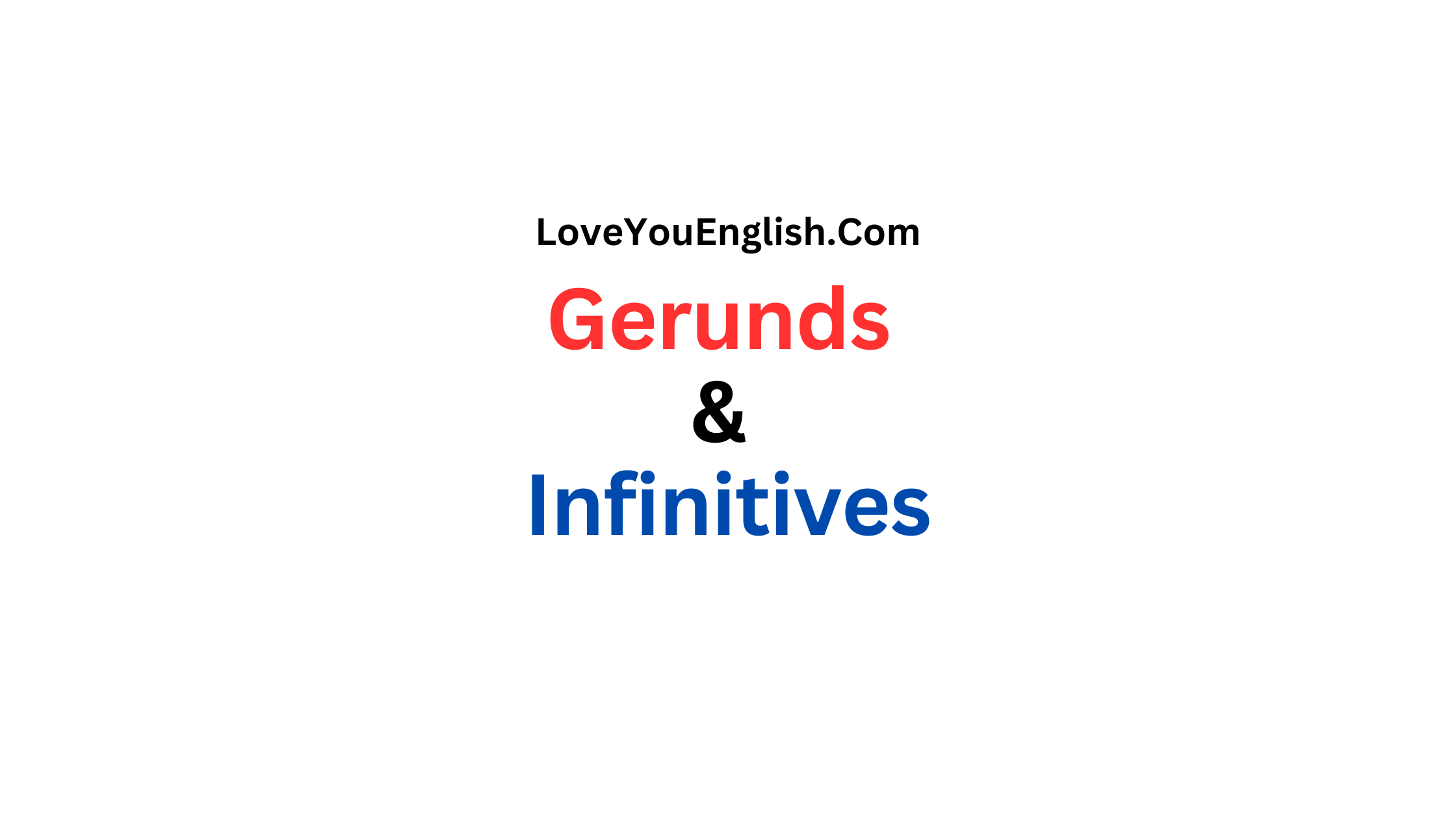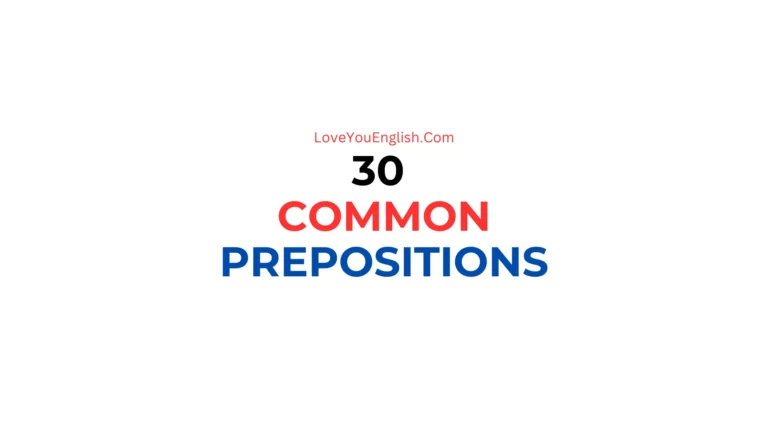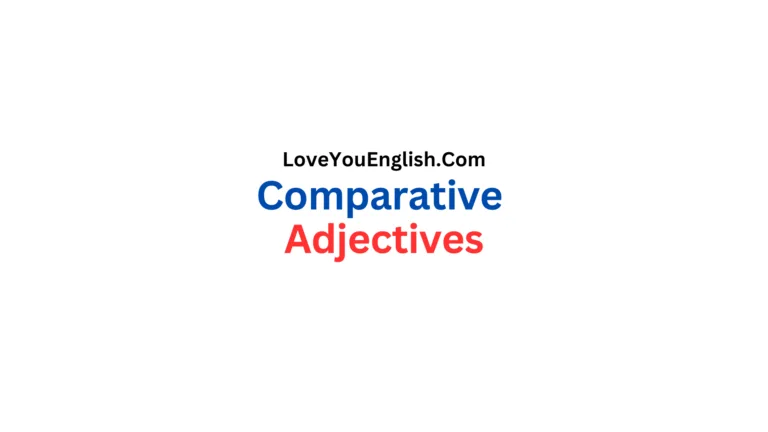Gerunds & Infinitives – What is the Difference?
When learning English, one of the trickiest areas can be understanding the difference between gerunds and infinitives.
Both are verb forms, but they have different roles and rules.
Let’s explore what they are, how they work, and how to use them correctly in simple, easy-to-understand language.
What is a Gerund?
A gerund is the -ing form of a verb that functions as a noun.
This means it can act as the subject, object, or complement of a sentence.
Here are some examples to illustrate:
Subject of a sentence:
-
- Swimming is good exercise.
- Reading helps improve vocabulary.
Object of a sentence:
-
- She enjoys dancing.
- I avoid eating too much junk food.
Complement of a sentence:
-
- His favorite hobby is painting.
- Their job involves writing reports.
In each of these examples, the gerund (-ing form of the verb) acts like a noun.
Common Verbs Followed by Gerunds
Some verbs are often followed by gerunds.
Here are a few common ones:
- Admit
- Avoid
- Consider
- Discuss
- Enjoy
- Finish
- Keep
- Miss
- Suggest
Example sentences:
- He admitted cheating on the test.
- They avoid traveling during the holiday season.
What is an Infinitive?
An infinitive is the base form of a verb, usually preceded by the word “to.”
Infinitives can function as nouns, adjectives, or adverbs.
Here are some examples:
As a noun:
-
- To learn is important.
- To eat healthy food is essential.
As an adjective:
-
- She has a lot of work to do.
- There are many places to visit.
As an adverb:
-
- He went home to rest.
- She studies hard to succeed.
Common Verbs Followed by Infinitives
Some verbs are often followed by infinitives.
Here are a few common ones:
- Agree
- Decide
- Expect
- Hope
- Learn
- Need
- Offer
- Plan
- Want
Example sentences:
- They decided to go on vacation.
- She hopes to get a promotion.
More cool topics:
- How to Learn English Grammar for Beginners
- How to Learn English Grammar: A Comprehensive Guide
- Past Continuous Tense: How and When to Use It
Gerunds vs. Infinitives – When to Use Which?
The choice between a gerund and an infinitive can sometimes be confusing.
Here are some guidelines to help you decide which to use:
After Certain Verbs
Some verbs are followed by gerunds, some by infinitives, and some can be followed by either but with a change in meaning.
Verbs followed by gerunds:
-
- Enjoy: I enjoy reading.
- Avoid: They avoid talking to strangers.
- Suggest: She suggested going to the park.
Verbs followed by infinitives:
-
- Decide: We decided to leave early.
- Hope: He hopes to travel soon.
- Plan: She plans to start a new job.
Verbs that can be followed by either (with a change in meaning):
Remember:
-
-
- I remember locking the door. (I have a memory of it)
- Remember to lock the door. (Don’t forget to do it)
-
Stop:
-
-
- He stopped smoking. (He quit the habit)
- He stopped to smoke. (He paused another activity in order to smoke)
-
After Prepositions
When a verb follows a preposition, it should be in the gerund form:
- She is good at playing the piano.
- They are interested in learning French.
- He left without saying goodbye.
As Subjects or Objects
Gerunds can act as the subject or object of a sentence, while infinitives often indicate the purpose or intent:
- Swimming is fun. (Gerund as subject)
- I like to swim. (Infinitive as object)
Expressing Purpose
Infinitives are often used to express the purpose of an action:
- She went to the store to buy milk.
- He studied hard to pass the exam.
Fixed Expressions
Some expressions are fixed and use gerunds or infinitives:
- It’s no use crying over spilled milk. (Fixed expression with gerund)
- I can’t wait to see you. (Fixed expression with infinitive)
Practice Makes Perfect
Understanding when to use gerunds and infinitives takes practice.
Here are some tips to help you master this part of English grammar:
Learn Common Verbs and Their Patterns:
-
- Make a list of verbs that are commonly followed by gerunds and another list for those followed by infinitives. Practice using them in sentences.
Read and Listen:
-
- Pay attention to how gerunds and infinitives are used in books, articles, movies, and conversations. This will help you get a feel for which form to use.
Practice Writing:
-
- Write sentences or short paragraphs using both gerunds and infinitives. This will help reinforce what you’ve learned.
Use Flashcards:
-
- Create flashcards with verbs on one side and example sentences on the other. This can help you memorize which verbs are followed by gerunds and which by infinitives.
Speak:
-
- Practice speaking with native speakers or fellow learners. Use gerunds and infinitives in your conversations to become more comfortable with them.
Common Mistakes to Avoid
Here are some common mistakes learners make with gerunds and infinitives, and how to avoid them:
Using the Wrong Form After Certain Verbs:
-
- Incorrect: I enjoy to read.
- Correct: I enjoy reading.
Using the Wrong Form After Prepositions:
-
- Incorrect: She is good at to sing.
- Correct: She is good at singing.
Forgetting to Use “to” with Infinitives:
-
- Incorrect: He decided go home.
- Correct: He decided to go home.
Confusing Gerunds and Infinitives in Purpose Statements:
-
- Incorrect: I went to the store buying milk.
- Correct: I went to the store to buy milk.
Conclusion
Understanding the difference between gerunds and infinitives is crucial for mastering English.
While it may seem complicated at first, with practice and exposure, it will become more intuitive.
Remember:
- Gerunds (-ing form) act as nouns and often follow certain verbs and prepositions.
- Infinitives (to + base form) can act as nouns, adjectives, or adverbs and are often used to express purpose.
Keep practicing, pay attention to patterns in the language, and soon you’ll feel more confident using gerunds and infinitives correctly.







